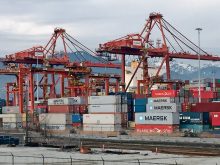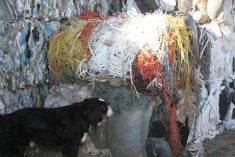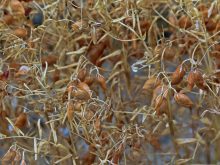Water is an obvious necessity for the health and well-being of plants, but there can be too much of a good thing, according to Manitoba’s lentil growers.
A decade ago farmers in that province harvested a record 155,000 acres of lentils. Last year they took off 310 acres.
“They have slowly tapered off to next to nothing and we have not heard any discussion at all about them coming back for this year,” said Herb Sulkers, director of field operations with Manitoba Crop Insurance Corp.
He said a combination of poor prices and difficulty growing the crop has led to the exodus.
Read Also

Canadian farmers need level playing field for regulations – says Minister MacDonald
Federal agriculture minister Heath MacDonald is urging the Canadian Food Inspection Agency and the Pest Management Regulatory Agency to speed up their decision making.
Carol Gunvaldsen, a grains industry analyst with Manitoba Agriculture, believes the move away from lentils has more to do with agronomics than with price.
“We’ve had a lot of fairly moist summers,” she said. “That’s been the biggest problem.”
At the same, Saskatchewan’s plantings have soared by a million acres. Growers in that province seeded nearly 1.5 million acres of lentils in 2002.
Gunvaldsen said that’s because Saskatchewan is drier than Manitoba, which has been fairly wet the past couple of years. That creates all sorts of harvest headaches for lentil growers.
“Lentils are a crop destined for the food market, for the table, with very little processing required, which means they have to be extremely clean,” Gunvaldsen said.
Dirt tagging and other quality problems associated with a wet harvest have pushed Manitoba growers away from lentils.
Sulkers said most farmers want to grow crops that are reliable. Lentils haven’t been.
“We have had quite a few losses on the crop over the years.”
Most lentil crops are insured, but the premiums are high and insurance payouts are not lucrative.
“We’re only there to cover cash costs,” Sulkers said.
“If that’s all you do year after year, you’re pretty soon not going to grow the things anymore.”
A typical premium for 80 percent lentil coverage is $8.36 an acre. Pea growers pay $3.60 an acre for the same level of coverage in the same risk area.
“Obviously the loss experience is better with peas,” he said.
Gunvaldsen hasn’t written the crop off as a choice for Manitoba growers in the future.
If lentil prices suddenly “skyrocket” and weather conditions shape up for a dry year, the crop could become attractive in central Manitoba.
“Manitoba producers are very adept and have experience,” she said.
“I’m sure given the opportunity they would go back in.”















